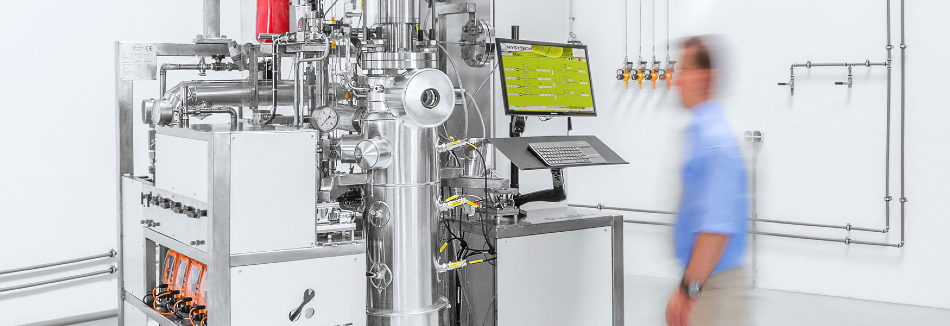Jan 23 2020
A completely new kind of bioreactor for the biological production of methane has enabled the use of extremely high pressure levels for the first time – and set new efficiency standards for the conversion of CO2 and H2 into methane. This significant improvement compared with conventional bioreactors is down to billions of microorganisms that only truly come to life under extreme pressure, as well as Austrian company Krajete GmbH, which designed the bioreactor and has now built the first pilot plant for testing the technology. Successful installation required a combination of experience of implementing chemical facilities and biological expertise.

© Blitzkinder Fotografie e.U.
The pressure is on! Political declarations of intent on climate change and the energy transformation are putting the onus on industry to come up with ever smarter ideas. One such idea, the brainchild of Austrian company Krajete GmbH, focuses on production of eco-friendly gas – using gas fermentation to produce methane from CO2. The company has developed a bioreactor that delivers enormous gains in the conversion rate by using extremely high pressure. The key to this success is what are called archaea – microorganisms that lived in prehistoric times and are used to extreme pressure conditions. And helpfully they can also transform CO2 into “green” natural gas.
Clean & Efficient
“Our plant has achieved previously unattainable conversion rates, because higher pressure speeds up chemical transformation processes,” explained Alexander Krajete, CEO of Krajete GmbH. “In addition, the archaea fermentation process uses hydrogen. This means that CO2 normally produced during biological fermentation is also converted into methane, and does not represent a contaminant anymore as with biomass fermentation. So with this higher yield the plant produces virtually pure methane instead of impure biogas. Based on this principle, almost all CO2 containing emission gases can be directly upgraded.”
The company developed the high-efficiency fermentation plant through the innovative combination of two fields that are normally seen as completely distinct: chemistry and biology. “In the chemical plant engineering sector it’s well known that higher pressure increases conversion rates,” says Krajete, referring to the idea behind the high-performance bioreactor. “But applying this simple concept to a bioreactor is a big task, because the microorganisms used need to be able to withstand such pressure. And most of them aren’t.”
Tamed Prehistoric Microbes
Krajete GmbH was able to draw on its extensive knowledge of archaea, a group of microorganisms that have existed on Earth for billions of years and nowadays are found in locations where extreme temperatures or pressure is the norm. The company had already managed to “tame” archaea for natural gas production in 2013. Five patents were registered to safeguard this success. Development of the high-performance bioreactor will allow the company to capitalise fully on the potential of this approach. “Our pilot facility has shown that we can obtain 500 litres of methane per hour from only ten litres of liquid at a pressure of 15 bar. Those figures for biosynthetic natural gas production are unrivalled anywhere in the world.”
One particularly challenging element of the development process was the pressure-resistant sensors, which measure the “vital signs” of gas fermentation (such as pH levels and redox potential). These were specially developed for the high-performance bioreactor by a leading global supplier from Germany. The next step was to gain detailed knowledge of how to preserve and control life under extreme pressure conditions. The pressure in the bioreactor must not be allowed to change too quickly, in spite of the need to add medium or take samples. Rapid pressure changes would put the archaea under massive stress and result in reduced performance, or cause the microbes to die off. Thanks to its long-standing experience of working with these microbes and building such facilities, Krajete GmbH was able to master the challenge. The new plant design is not only suitable for small bioreactors; it can also be used in large-scale facilities.